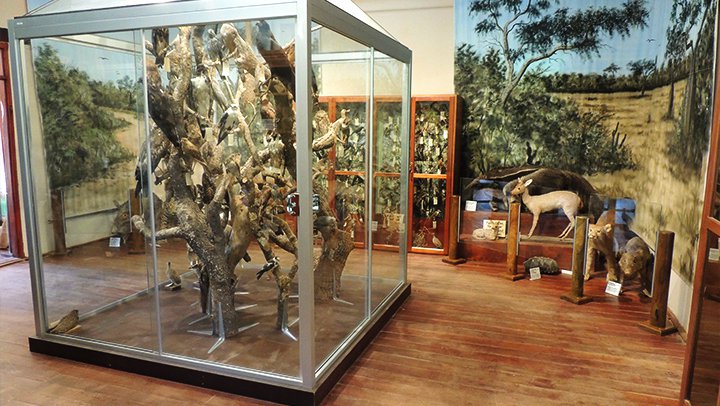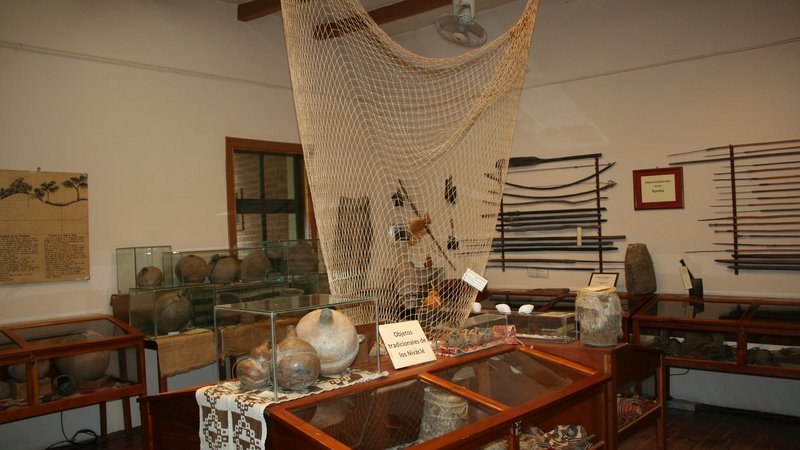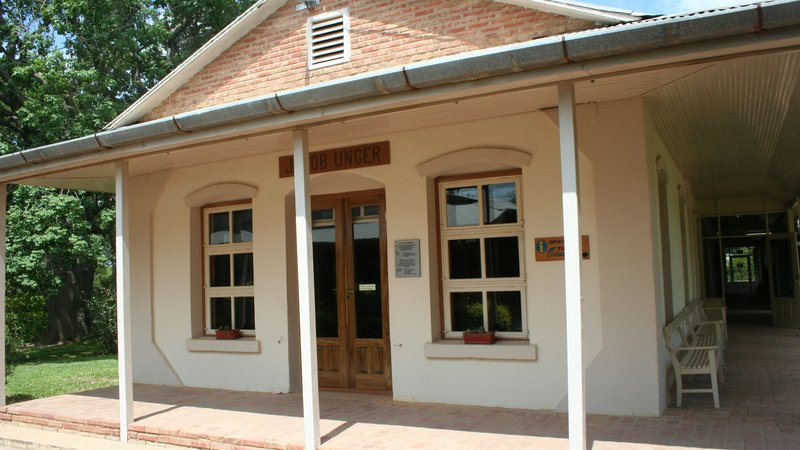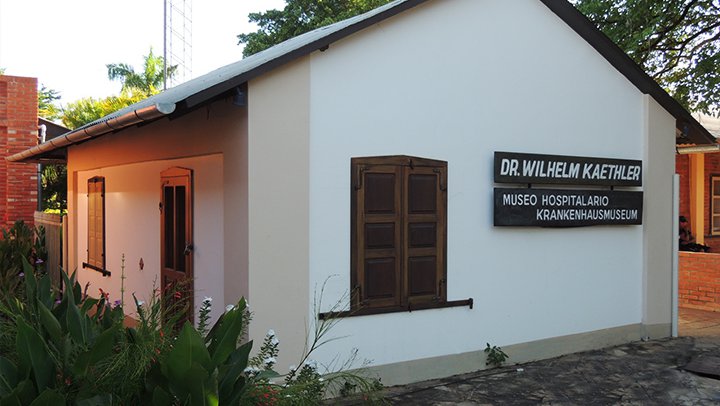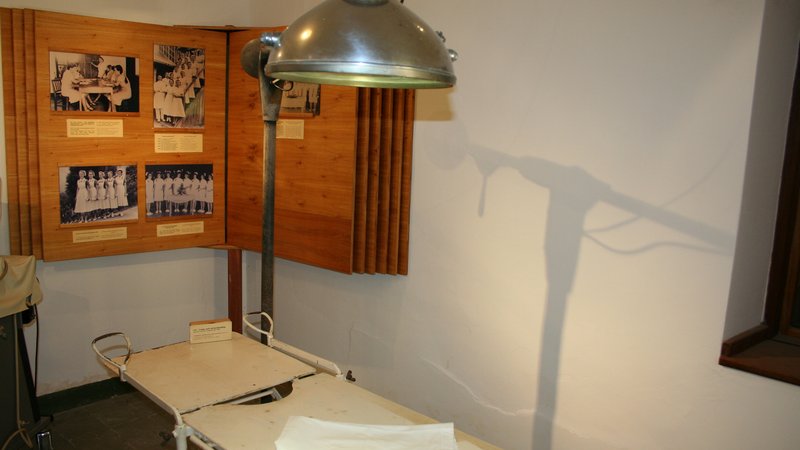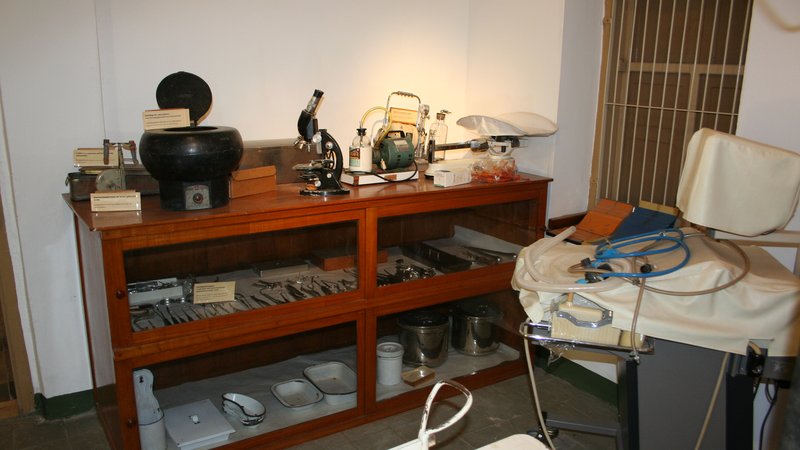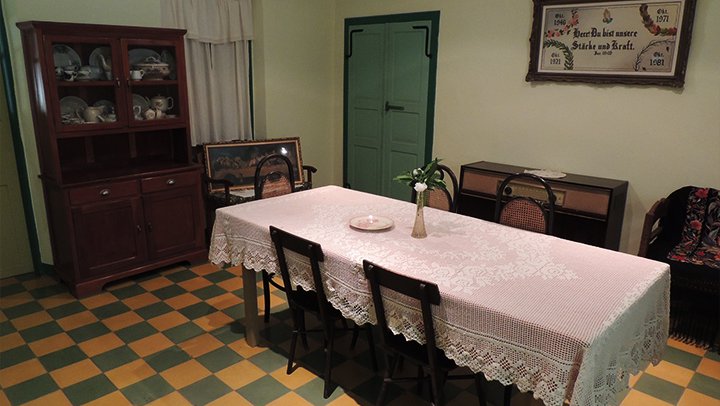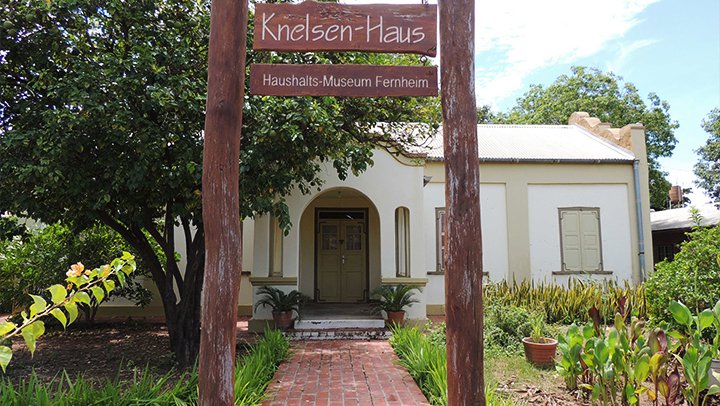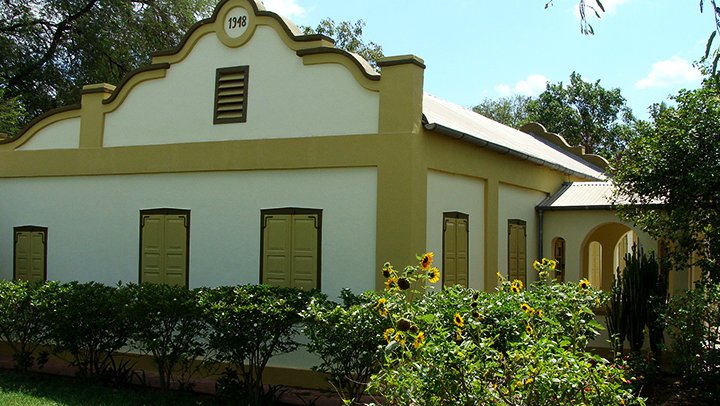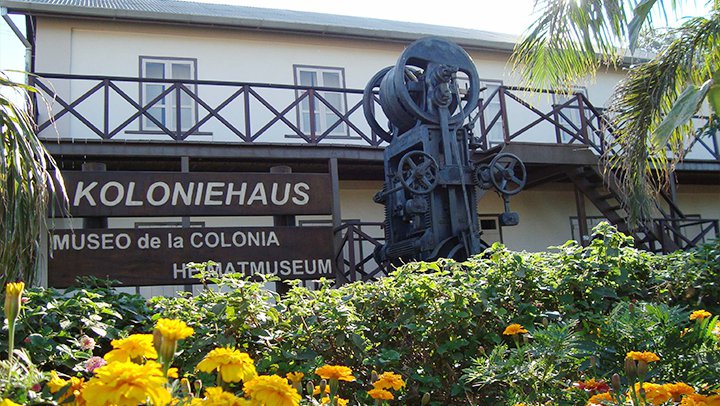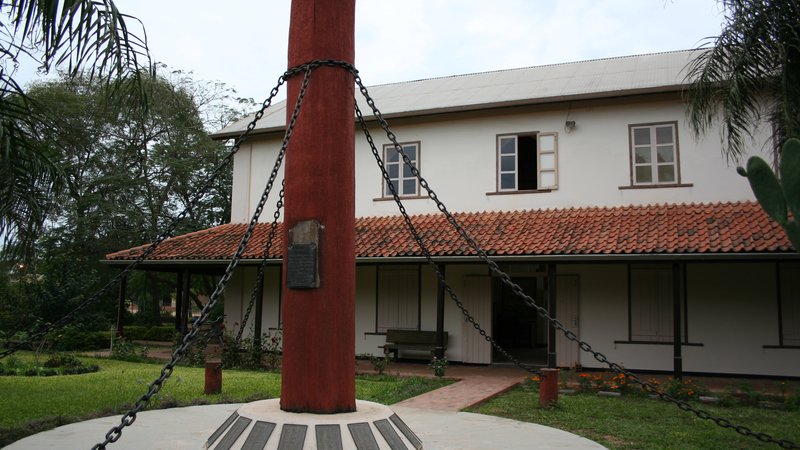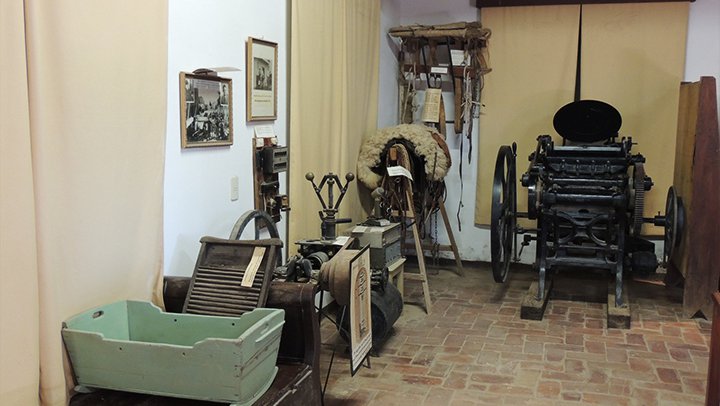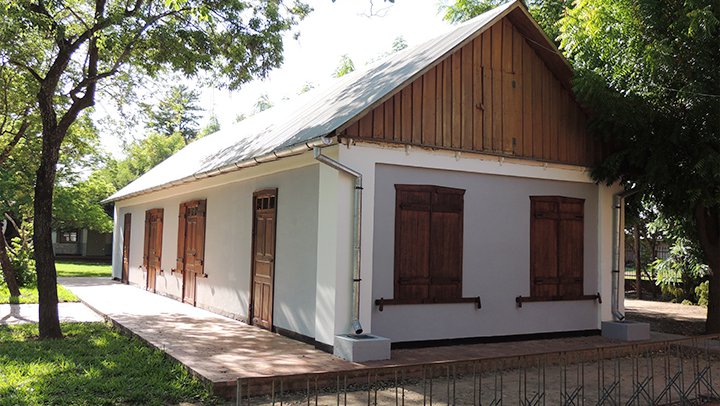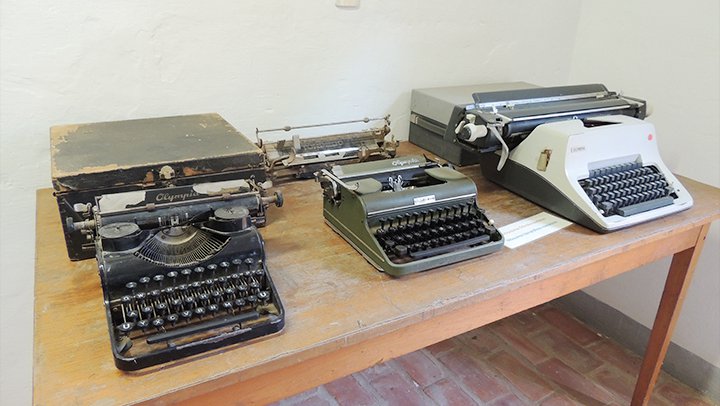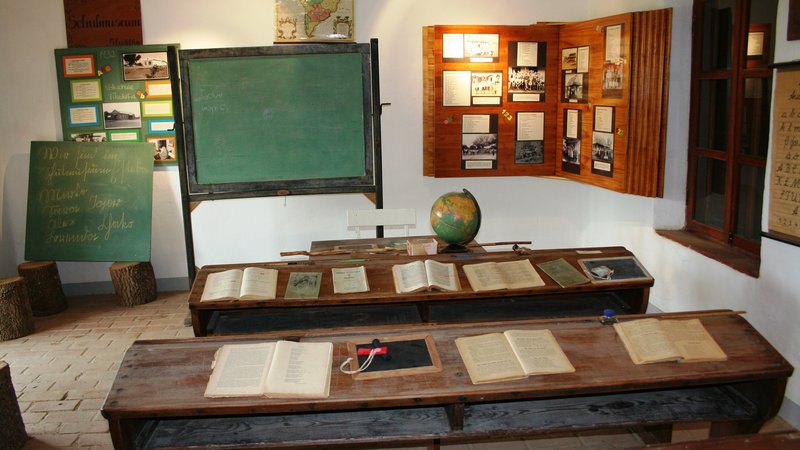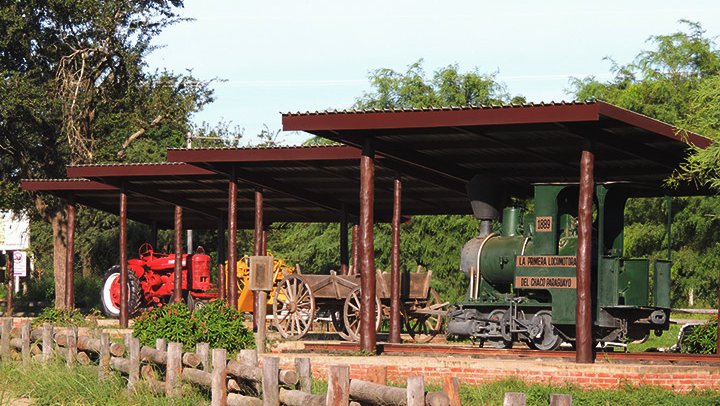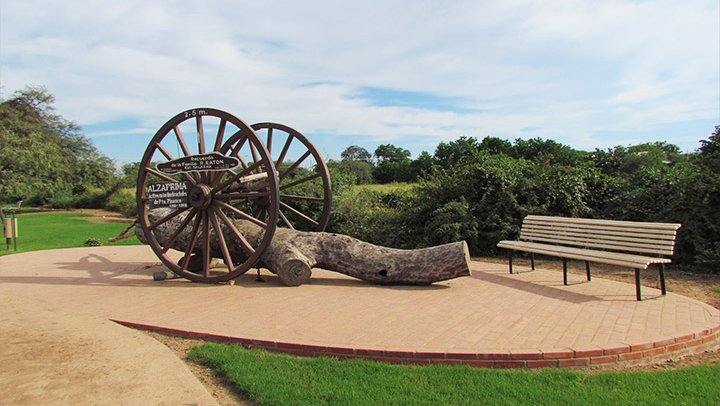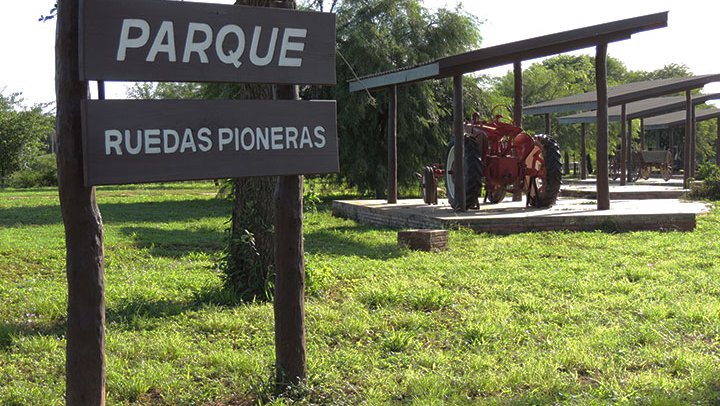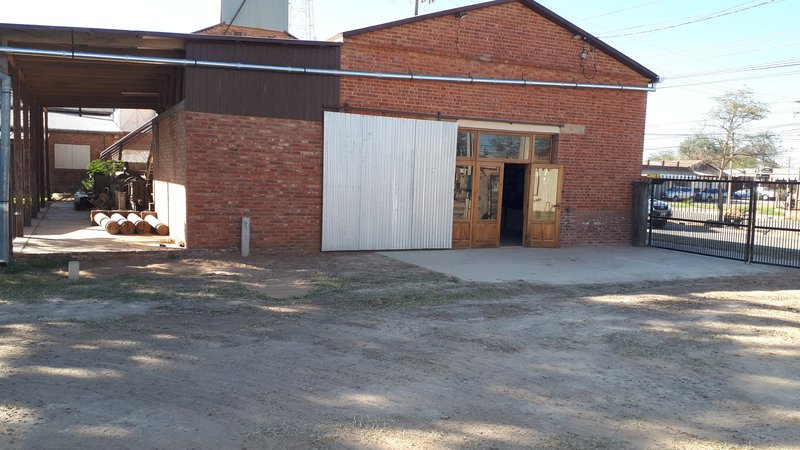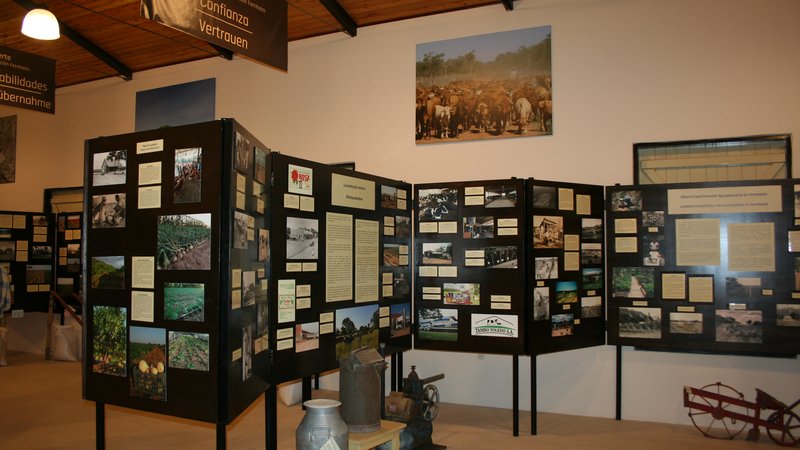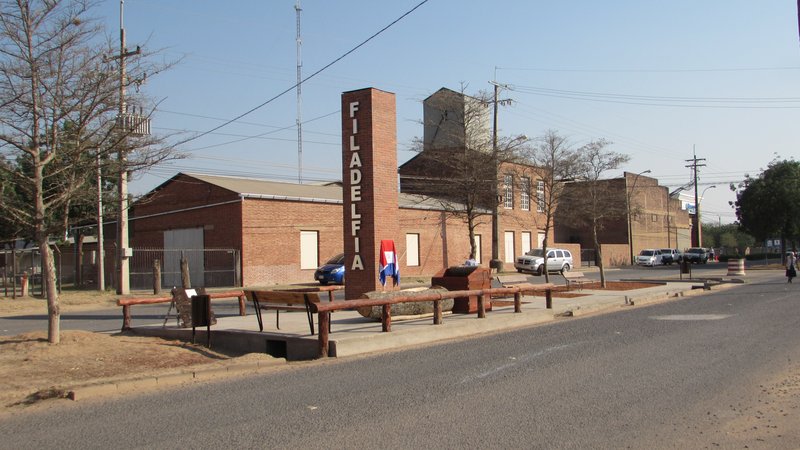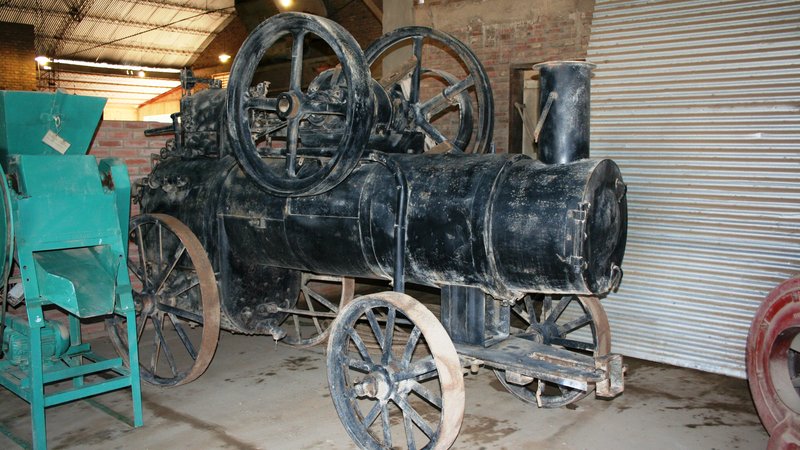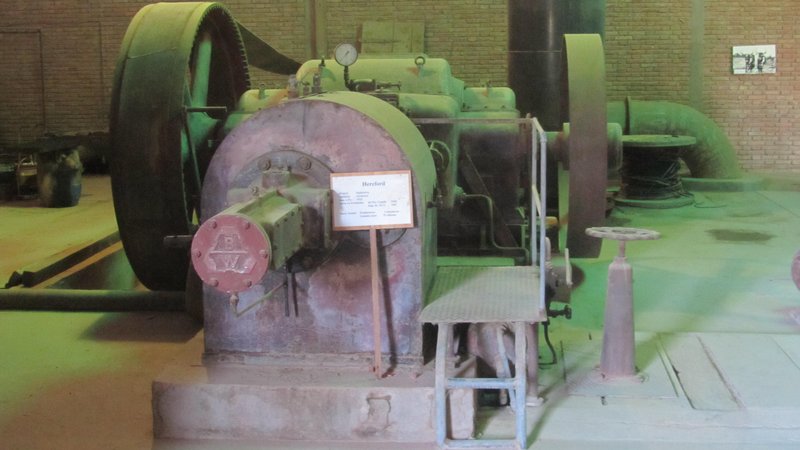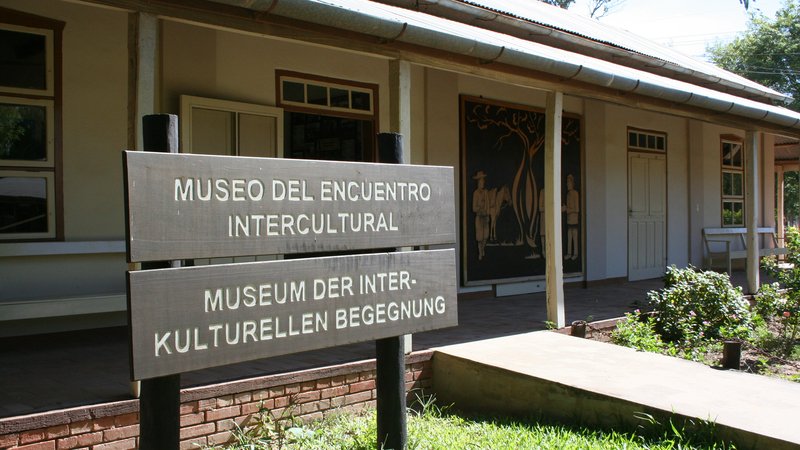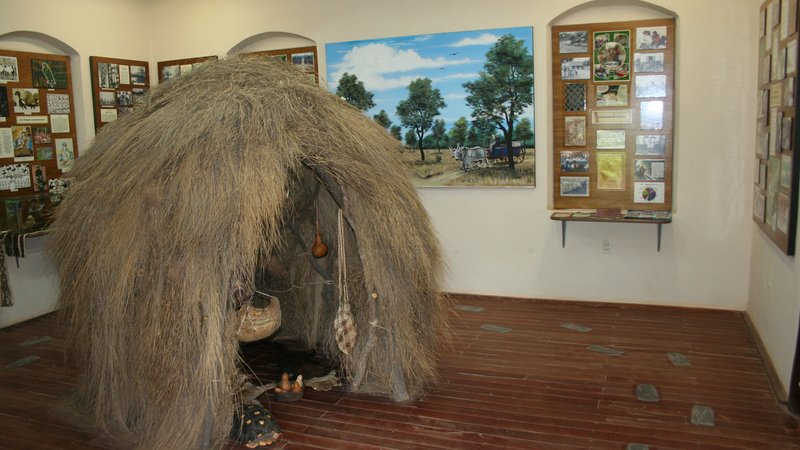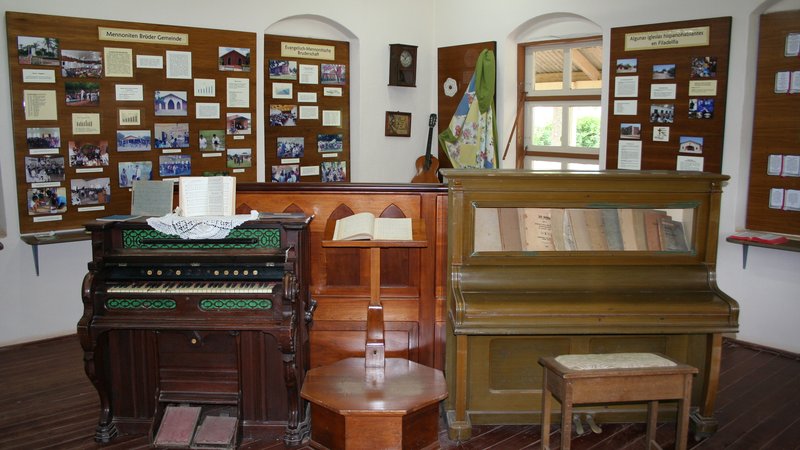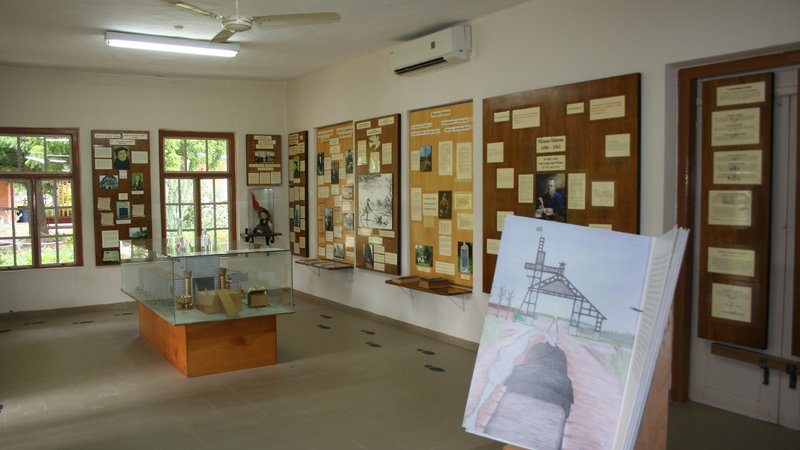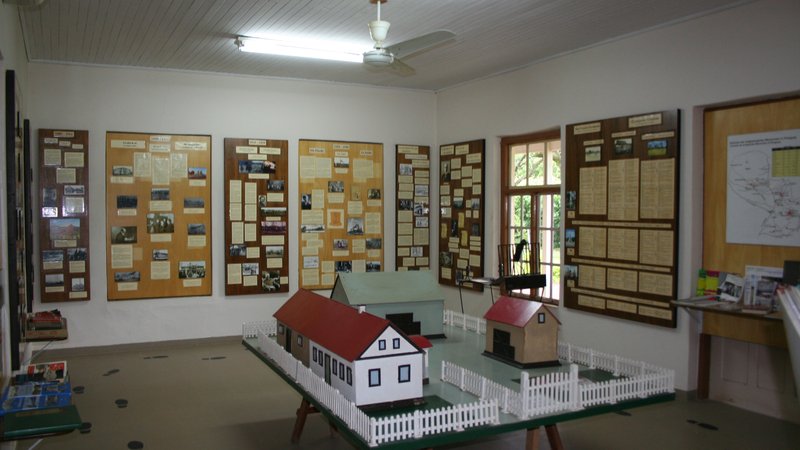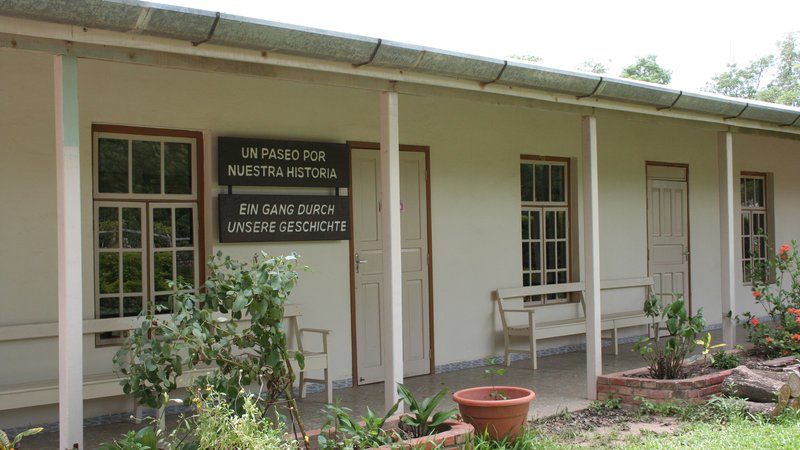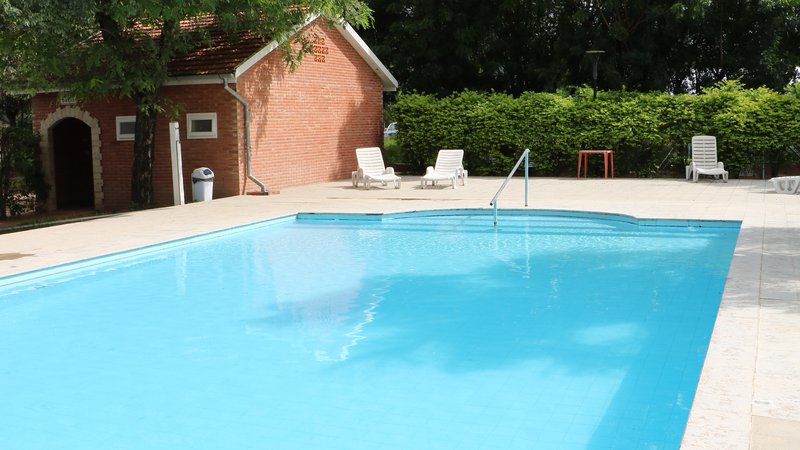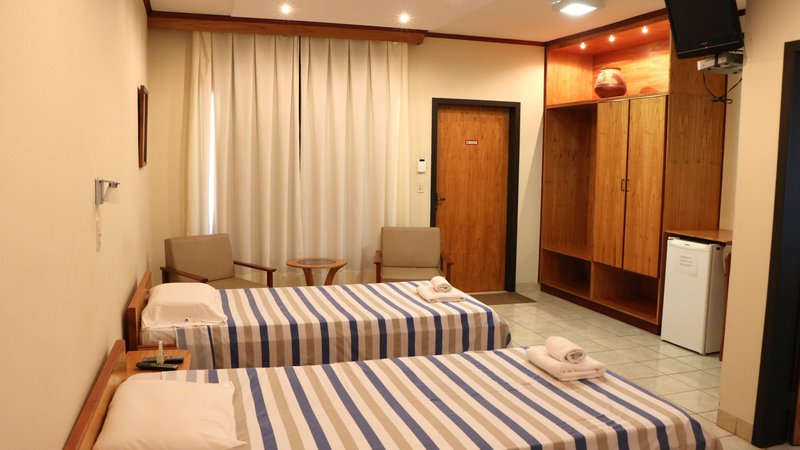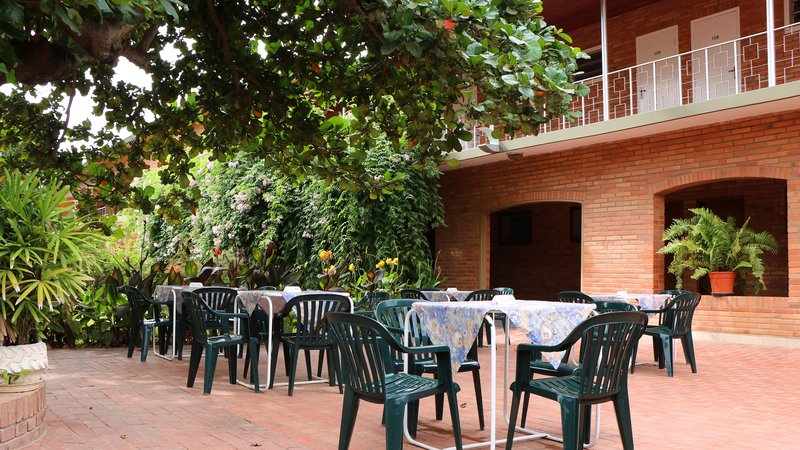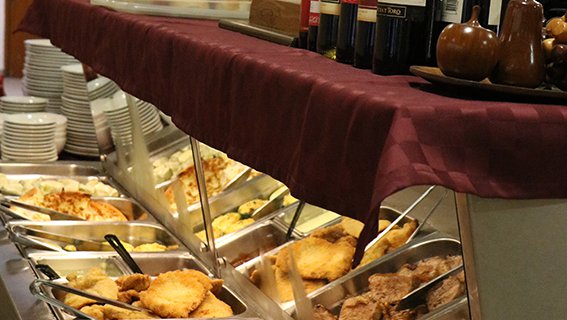Filadelfia
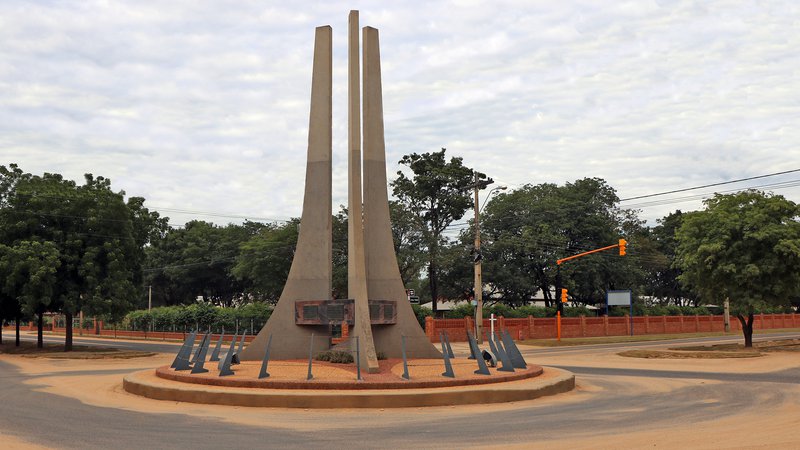
The town of Filadelfia was founded on August 17, 1931 as the administrative center of the Fernheim Colony. About 1,700 refugees of the evangelical Mennonite faith from the Soviet Union had settled in 13 villages on the open, bitter grass covered fields in the central Chaco. They called their settlement “Fernheim”, which means “home far away”. It was difficult to find a centrally located place between the villages that would have enough potable groundwater. Upon finding this site, the immigrants founded a town there and named it Filadelfia, which means "brotherly love". They immediately designed a checkerboard plan, establishing the division of the city into zones before anyone even lived there: the industrial area, the commercial area and the residential area. The name of the main street, Hindenburg, honors the kind reception of Mennonite refugees from Russia by the German President Paul von Hindenburg.
The first buildings in Filadelfia were constructed in the form of colliery work, that is, mandatory community work. This is how the industrial plant with the sawmill, the hospital, the Colony House as an administrative building, the schools and other community buildings were built. The Fernheim civil society constructed and maintains all roads, from the first aisles in the bush to the current road network that connects the villages with each other and with the town center. It was not until 2009 that the two main roads in the town were asphalted.
Filadelfia gradually became the center of economic, cultural and spiritual life, not only for the Mennonite immigrants. It also became an attraction for many indigenous ethnic groups, Paraguayan citizens and even foreigners. In 1993, the Paraguayan government established Filadelfia as the capital of the department of Boquerón. In 2006, the district of Filadelfia was created with its respective municipality, covering an area of 13,879 km2. Filadelfia currently has a population of approximately 18,000 inhabitants.
Filadelfia offers infrastructure and services for the entire region. From a simple colony center of the Mennonites, it has become an urban center for a vast territory.
In February 2023, authorities officially approved the Filadelfia Urban and Territorial Plan (POUT), thereby granting Filadelfia an environmental license approved by the Ministry of the Environment and Sustainable Development (MADES).
Tourism Office
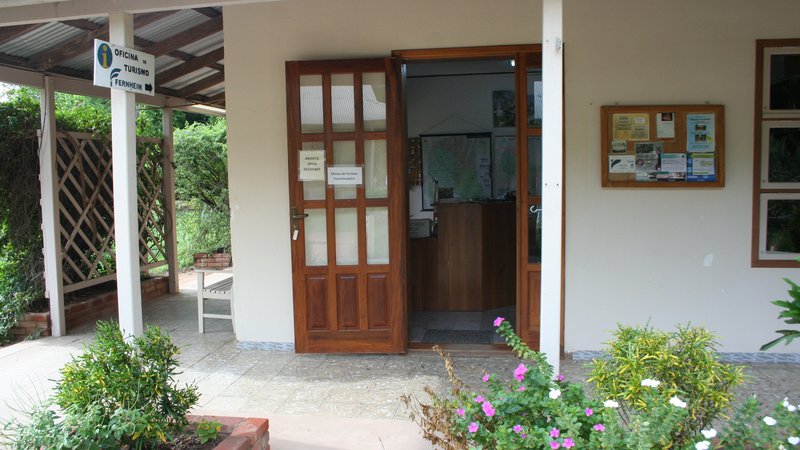
The tourism office of the Fernheim Cooperative is part of the Hotel Florida. The opening hours are from Monday to Saturday from 7:00 a.m. to 11:30 a.m. and from Monday to Friday from 2:00 p.m. to 6:00 p.m. The office is closed on Sundays and holidays.
The tourism office is located in the courtyard of the Menno Simons Hof and offers the following services:
- General information
- Guided tours of the different departments of the Fernheim cooperative and civil association
- Brochures about the colony of Fernheim, the city of Filadelfia and its museums
- Guided tours of the local museums
- City tour in Filadelfia
- Coordination of trips to other tourist attractions.
Itineraries for group travels
Museums
Scientific Museum Jakob Unger
This museum hosts a collection of preserved animals, donated by Jakob Unger and his son Jakob Unger Jr. Thanks to the Fernheim Cooperative, this exhibition was later expanded. The bird collection is impressive as it displays 191 of the 250 estimated species native to the region. Further, the museum contains some traditional objects used by the indigenous tribes of the Chaco as well as a botany section with the most common trees, bushes and cacti of the region.
Hospital Museum Dr. Wilhelm Kaethler
The Hospital Museum is the oldest building in Filadelfia. It consists of two small rooms and was built in 1932. As time went by, these rooms were used alternately as pharmacy, doctor´s office, operating room, delivery room, laboratory, isolation room and so on. Pictures, appliances and furniture tell many stories.
Avenida Hindenburg esq. Trébol
Household museum Knelsenhaus
Jakob Knelsen built this stately house in 1948 as his private residence. Later it became the only hotel in town for many years. In 2002 it was renovated and furnished as household museum by a women’s initiative.
Colony House Museum
The Colony House is the first administration office and community hall of the town. It is one of the first structures built by the settlers. The construction began in 1933 and ended a year later. The work was accomplished in the same manner in which all communal buildings were constructed: every family providing a certain number of free labor days.
The Colony House was converted into a museum for the 50th anniversary of the colony. It is one of the few buildings left from the early pioneer days, and is a symbol of the history of Fernheim.
0491 41 7380 0985 820 746
School Museum Peter P. Klassen
The first secondary school in Fernheim was located in Schönwiese, village number 7. Not much later, in 1935, the colony administration built a new school in Filadelfia. Since 2007, this specific building has hosted the school museum.
The exhibition consists of furniture, books and materials that were used in elementary and in secondary education. Pictures display schools, school activities and lists of former teachers. Old film projectors, copy machines, typewriters, etc. of that time portray the technological development within the school system.
Open Air Museum „Parque Rueadas Pioneras”
An open-air museum, located on the eastern access road to Filadelfia, exhibits means of transportation of the early years. Vehicles like the ox-drawn cart, the railroad with its steam-powered locomotive, horse buggies, wagons, the Farmall M tractor and grader were of utmost importance during the time of geographical isolation.
Agricultural Museum
The Agricultural Museum shows the economic development of the colony Fernheim from its beginnings to the present. Photographs, charts and exhibits with their respective descriptions cover 18 different topics of interest. The museum opened in 2021.
0491 41 7380 0985 820 746
Industrial Museum
This museum is located on the site of the industrial plant on Hindenburg Avenue. It is divided into 4 sections:
- The refinery: a three-story building constructed in 1957. It has since become a city landmark.
- The steam boilers and generators which were used to produce electricity.
- Industrial machines that processed agricultural products such as peanuts and cotton.
- Agricultural implements from the early decades and the period of mechanization.
0491 41 7380 0985 820 746
Intercultural Encounter Museum
This museum opened in 2015 in the oldest building on the Menno Simons Hof, which used to be an elementary school. Pictures, exhibits and descriptions of different cultures explain the relationships between the various different ethnic groups of the central Chaco. The museum displays missionary work of the local churches, from the first years to the present as well, and highlights the challenges of a multicultural society.
Museum: “A walk through our history”
The museum of Mennonite History is located on the Menno Simons Hof. The walk through Mennonite history starts with the Anabaptist movement in the 16th century and continues until present time. Pictures, graphics, maps and short written explanations guide the viewer throughout the museum.
Hotel Florida
Hotel Florida is a charming hotel located in the centre of Filadelfia. It is a place of relaxation. It has extensive rooms, fresh lounges, excellent restaurant and a colorful garden. Hotel Florida offers national and international meals, swimming pool, car parking lots, fax, WiFi, and computers for use in the reception area and laundry service.
Information regarding tourism in the Chaco and an air-conditioned conference hall are offered as well.
